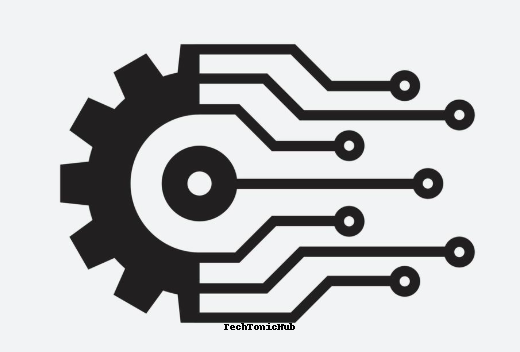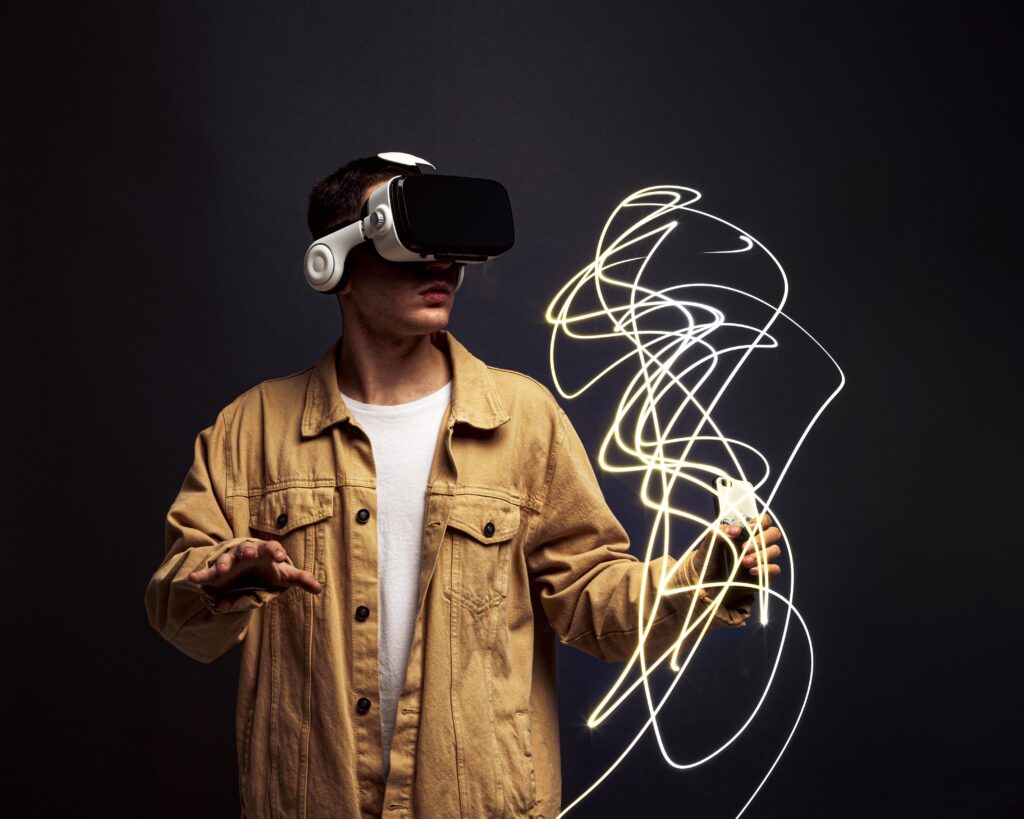Global Eye Tech News Vision shapes our view and interaction with the environment; hence, improvements in eye technology are essential to improve life all around. So From wearable technologies to innovative treatments, the field of eye technology is rapidly evolving, with innovative ideas transforming access to treatment, diagnosis, and eye care. Providing insights for eye care professionals, tech aficionados, and health innovators, this blog catches the most recent developments in vision correction, diagnostics, wearable tech, worldwide efforts, and reduction of digital eye strain.
Breakthroughs in Vision Correction Technologies
Non-Invasive Eye Surgeries
Non-invasive surgeries are among the most radical developments in vision repair. While LASIK and other conventional procedures call for corneal incisions, new advancements have brought non-invasive substitutes such as light-based corneal reshaping .
For example, a novel approach uses only light and oxygen to change the cornea; therefore, it avoids surgical blades or lasers. Faster recovery periods, less chance of problems, and more patient accessibility for those reluctant about intrusive operations are only three benefits of this technology. Vision scientist Prof. Alex Green says, ‘Non-invasive eye operations represent a big advance in the field, allowing patients the chance for vision correction without the hazards associated with conventional treatments.’.
Advanced Contact Lenses
Non-invasive surgeries are among the most radical developments in vision repair. While LASIK and other conventional procedures call for corneal incisions, new advancements have brought non-invasive substitutes such as light-based corneal reshaping.
For example, a novel approach uses only light and oxygen to change the cornea; therefore, it avoids surgical blades or lasers. So This technology can offers us three benefits: faster recovery periods, reduced risk of complications, and increased patient accessibility for those who may be hesitant about intrusive operations. Prof. Alex Green, a vision scientist, states that non-invasive eye operations are a significant advancement in the field, providing patients with the opportunity for vision correction without the risks associated with conventional treatments Global Eye Tech News .
Innovations in Eye Care Diagnostics
Devices for Early Detection
The Early diagnosis of eye diseases such as glaucoma, cataracts, and diabetic retinopathy is critical to preventing irreversible vision loss. Advanced diagnostic tools now enable early detection with greater accuracy and accessibility.
One notable innovation is a smartphone-powered retinal imaging system, which allows professionals to screen for diabetic retinopathy in underserved communities. Portable and cost-effective, this system bridges the gap for patients who might not otherwise have access to screenings. A study found that incorporating such devices improved the timely diagnosis of conditions in rural communities by 35%, demonstrating their powerful impact on global eye health Global Eye Tech News.
AI-Driven Diagnostics
In eye care diagnostics artificial intelligence (AI) is fast transforming the field. By use of extensive visual data analysis, artificial intelligence systems may identify anomalies suggestive of early illness signs such macular degeneration or retinal detachment. While drastically reducing diagnosis times, these instruments improve accuracy and provide a second layer of guarantees for eye care practitioners Global Eye Tech News.
Developments in Wearable Technology for Vision Enhancement
Smart Glasses
Among the most novel wearable solutions for visual improvement are smart glasses. These technologies allow the sight handicapped to more freely negotiate their environment by combining augmented reality (AR) with sophisticated sensing capabilities.
Imagine a tech company creating smart glasses that convert text into audio, allowing visually challenged consumers to instantly read labels and signage. These glasses also draw attention to roadblocks in a user’s path, so enhancing confidence in regular tasks and safety. Accessibility tech entrepreneur Sarah Patel says “Wearable technology is not just about convenience; it’s about empowering the visually impaired to live more independent life by enhancing their interaction with the world around them Global Eye Tech News.”
Augmented Reality for Eye Care
Global Eye Tech News Recently, augmented reality (AR) has spread into operational and clinical spheres within eye care. For difficult instances, AR technology lets experts see procedures with great accuracy, therefore improving planning and results. AR-supported headgear in remote diagnostics also lets experts assist on-site personnel, therefore changing the way eye care is provided in underprivileged areas.
Global Eye Health Initiatives Using Technology
Increasing Access to Eye Care
Access to quality eye care remains a global challenge, with more than 1 billion people lacking essential services. Technology-driven initiatives aim to address these inequities by delivering care to remote and underserved areas using telemedicine and portable diagnostic tools. For instance, a telemedicine-equipped mobile eye clinic has effectively provided comprehensive eye care to rural areas. The clinic combines portable equipment with real-time consultations via video calls, increasing access to screening and treatment by over 40% in its operating regions. Dr. Javier Ruiz, director of global health initiatives, notes, “Global eye health initiatives that leverage technology are crucial in addressing the inequities in access to eye care, ensuring that everyone, regardless of location, has the opportunity for good vision health.”
Case Studies of Success
While Peek’s mobile apps let non-specialists perform eye tests anywhere, sending results straight to experts, projects like Operation Eyesight and Peek Vision show the useful application of technology to extend care. Operation Eyesight’s model combines low-cost, portable tools with local partnerships to deliver sight-restoring surgeries and treatments.
Tackling Digital Eye Strain and Blue Light Impact
Understanding Digital Eye Strain
With increased reliance on digital devices, digital eye strain (DES) has become a common concern. Symptoms range from fatigue and dryness to blurred vision and headaches, potentially hindering productivity and quality of life. A 2021 survey revealed that 50% to 90% of adults using computers daily experience symptoms of DES, underlining the need for proactive solutions.
Solutions for Digital Eye Strain
The effects of digital eye strain (DES) are being addressed by new technologies. Blue light filters, screen protectors, and software solutions all help to reduce exposure to harmful wavelengths. Glasses with blue light-blocking lenses have become popular for protecting retinal health and reducing strain on the eyes. One study found that with consistent usage over one month, the new blue light filtering technology reduced DES symptoms in 75% of participants, which is a significant improvement in productivity for those affected. Optometrist and digital health advocate Lisa Johnson says, “Understanding and addressing the impact of blue light on our eyes is becoming increasingly important for long-term visual health.”
The Future of Eye Tech and Vision Care
This is an exciting time for the intersection of eye care and technology. From innovative non-invasive operations to wearable technology that enhances mobility and global projects that bridge gaps in eye care access, these advancements will benefit many, including myself.
The projections indicate that the worldwide wearable technology market for healthcare, which includes vision-enhancing devices, will reach $110.42 billion by 2027, reflecting the expansion of this industry. As artificial intelligence-driven diagnostics develop, eye care will become quicker, more accurate, and more widely available all around.
Every one of these advancements supports the need for cooperation among health advocates, technological developers, and eye care experts. Technology offers a future where clean eyesight is a global norm, tackling issues like DES and accessibility inequities while improving therapies.
Staying current and participating in these developments guarantees preparation for a day when vision care knows no limits for those working in eye care, tech-savvy individuals, and health entrepreneurs Global Eye Tech News.
Artificial Intelligence in Vision Diagnostics
Providing improved accuracy, efficiency, and accessibility, artificial intelligence (AI) has transformed the discipline of visual diagnostics. Machine learning algorithms predict the future course of illnesses such as macular degeneration, glaucoma, and diabetic retinopathy through retinal scans at early stages. Early identification helps greatly enhance patient outcomes by allowing prompt action.
One such example is the inclusion of AI-powered platforms in regular eye tests. These systems process enormous volumes in seconds, uncovering problems that a human inspection would miss. Using AI techniques has also opened access to eye care in underdeveloped areas where trained ophthalmologists could be rare. More patients may get critical treatment without requiring travel or specialized consultations by allowing general practitioners to use AI-assisted diagnostics.
Leading artificial intelligence researcher in healthcare, Dr. Emily Tran, notes, “AI-driven diagnostics are a game-changer for vision care, as they lower barriers to early diagnosis and guarantee patients receive appropriate treatment before irreversible damage occurs.”
The combination of artificial intelligence and vision care is not only changing conventional wisdom but also opening the path for a day when intelligent technologies will be indispensable partners in preserving eye health all around.
Gene Therapy and Vision Restoration
Gene therapy is starting to show up as a breakthrough solution in the search for genetic reasons for vision loss. By changing or swapping defective genes causing inherited eye problems, this inventive approach seeks to either restore sight or limit further degeneration. Once considered untreatable, illnesses such as retinitis pigmentosa (RP) and leber congenital amaurosis (LCA) are now under assault with hopeful outcomes.
One great advance is Luxturna, the first gene therapy authorized by the FDA for hereditary retinal illnesses. Luxturna has altered eyesight for those with certain genetic abnormalities causing LCA in ways that have transformed their lives. The treatment injects a functioning copy of the defective gene straight into the retina, potentially producing important proteins required for proper vision.
Apart from its uses in medicine, researchers are looking at ways to maximize the possibilities of gene therapy. Using CRISPR-based genome editing technologies, for instance, may improve the accuracy and flexibility of therapies, thereby addressing a wider spectrum of genetic alterations. Though gene therapy is expensive and complicated, continuous research and accessibility programs seek to make it more easily available to more people everywhere.
Dr. Michael Carter, a pioneer in genetic ophthalmology, states that gene therapy offers hope to those suffering from hereditary blindness. Its ability to restore eyesight transforms not only personal life but also the overall area of vision care, even if challenges still remain Global Eye Tech News.
The Role of Wearable Vision Tech
Wearable technology keeps transforming the way visually challenged individuals engage with their surroundings. Devices such as smart contact lenses and augmented reality (AR) glasses offer enhanced visual aids, real-time information, object recognition, and mobility assistance.
For individuals suffering from conditions such as macular degeneration or blindness, devices like E-Sight and OrCam utilize artificial intelligence technology and superior optics to enhance their resThese aids enable individuals to carry out daily tasks more independently, read, and recognize faces. Conversely, AR glasses enable visually impaired individuals to enhance their perception of their surroundings by incorporating integrated obstacle identification and navigation features.vigation help.
Smart contact lenses also show a significant leap forward. By overlaying digital interfaces exactly onto the user’s field of vision, companies like Mojo Vision are building glasses that can instantaneously access navigation, notifications, and other digital assistance capabilities. For millions of individuals worldwide, this creation presents incredible opportunities to enhance accessibility and improve their quality of life.
Wearable vision technology enhances preventative care by adding components of health monitoring in addition to helping those with impairments. Some AR glasses, for example, double as diagnostic tools by employing real-time scanning and data collection for early eye disease identification.
The constant development and enhancement of wearable vision technologies underline the significant impact of imagination in guiding the path of vision care and thus empower customers with greater information access and autonomy.
Advancements in Optical Prosthetics
Individuals with severe visual loss or blindness now have new alternatives because to optical prostheses, another innovative field of vision treatment. From bionic eyes to retinal implants, these solutions are designed to bridge the gap between biological systems and modern technology in order to restore functional sight.
A groundbreaking innovation in this area is the Argus II Retinal Prosthesis System, often called the “bionic eye.” A small implant connected to a wearable camera system is the heart of this gadget, which is made for those with retinitis pigmentosa. After receiving visual data from the camera, the implant may trigger the remaining retinal cells to produce visual signals. Users are able to see light, motion, and forms, greatly improving their quality of life, even if the resultant “vision” is not completely compatible with normal sight.
Optical prosthesis are being further advanced by research into brain-machine interfaces. The goal of certain experimental technologies is to transmit visual data directly to the brain, rather than via impaired eyes. One such technology is neural implants. People with diseases or disorders affecting the optic nerve or other important pathways may be able to experience vision with the help of these devices.
Researchers are always working to improve the biocompatibility, usefulness, and resolution of optical prosthesis, which is a subject that is still in its infancy but is making great strides. According to experts, this technology has the potential to become a game-changer for the blind community as it develops further.
Neuroprosthetics pioneer Dr. Karen Lee says, “The intersection of neuroscience and technology is opening doors we never thought possible.” The goal of restoring sight becomes closer to fruition with each new development.
Artificial Intelligence in Vision Care
Incorporating artificial intelligence (AI) into vision care has revolutionized diagnosis, therapy, and overall management of eye health. At early stages, AI-powered algorithms have shown amazing accuracy in spotting eye disorders such as glaucoma, diabetic retinopathy, and age-related macular degeneration (AMD), therefore allowing faster treatments and better patient outcomes.
Apart from diagnosis, artificial intelligence finds uses in tailored therapy planning. By analysing a patient’s genetic, lifestyle, and health data, predictive algorithms can suggest customised treatments that ensure improved compliance and efficiency. For example, artificial intelligence techniques are enabling ophthalmologists to decide ideal doses for anti-VEGF injections used to treat wet AMD, thereby minimizing adverse effects and optimizing therapeutic results.
With the potential to democratize access to premium eye care worldwide, artificial intelligence in vision care presents even more promise. Patients from low-resource or distant locations may get accurate diagnoses and virtual consultations without travelling by integrating artificial intelligence into telemedicine systems. As developments speed forward, artificial intelligence leads the way in making vision care a more affordable, accessible, and customized area for everyone.
The Role of Gene Therapy in Vision Restoration
Rising as a potent weapon in the battle against hereditary retinal illnesses and other vision-related conditions is gene therapy. With this innovative technique, delivering genetic material straight into cells to fix or replace faulty genes will help treat the underlying cause of eyesight loss.
The creation of Luxturna, the first FDA-approved gene therapy for a hereditary eye ailment, is one very noteworthy breakthrough in this area. Luxturna focuses especially on biallelic RPE65 mutation-associated retinal dystrophy, an uncommon condition causing progressive vision loss. A viral vector introduces a functional copy of the RPE65 gene into retinal cells, thereby reinstating their ability to synthesize essential vision-related proteins. Patients treated with Luxturna have shown significant gains in their vision in low light, everyday task performance, and independence restoration.
Researchers are investigating gene therapy as a treatment for various acquired ailments, such as age-related degeneration, in addition to hereditary diseases. By increasing the synthesis of either neutralising or protective proteins, gene therapy could potentially decrease or even stop eyesight loss in millions of people worldwide.
However, there is still work to be done in perfecting these methods to ensure cost, effectiveness, and safety. Key areas of concentration for researchers include delivering genetic material to the retina without inducing immune responses, attaining focused accuracy in editing, and resolving the high expenses related to development. Despite these challenges, the field of vision care has made significant progress with the potential for gene therapy to provide either permanent or continuous remedies for visual loss.
Dr. Samuel Ortiz, a geneticist specializing in ocular disorders, states, “Gene therapy is proving to be a lighthouse of hope for patients and families plagued by inherited visual impairments with each accomplishment.” A paradigm change is about to redefine what is feasible in eyesight restoration.”
Neural Prosthetics and Vision Restoration
The search to restore vision to those with extreme visual loss is mostly dependent on neural prosthesis. These sophisticated gadgets directly connect to the nervous system, bypassing damaged or nonfunctional cells to provide the brain with sensory information. Researchers want to provide persons affected by blindness significant visual information by using the complicated interaction between electronics and neurological circuits.
The bionic eye, a remarkable invention for those with retinal degenerative illnesses, is among the most important advancements in this field. Systems like the Argus II retinal prosthesis combine a microelectrode array implanted on the retina with a camera-equipped eyeglass system. The camera gathers visual data, converts it into signals, and sends them to the implant, therefore activating the surviving healthy retinal cells to communicate the data to the brain. Although the vision restored may not exactly match normal eyesight, it might provide individuals with functional vision so they may see light, forms, and movement—thus changing their capacity to interact with the environment.
Researchers are also investigating cortical implants, which directly activate the brain’s visual cortex, thereby avoiding the eye completely. Retinal prosthesis would not be useful in cases when optic nerves are injured or nonfunctional, so this method shows potential for restoring vision to such people. Early tests have shown the possibility that such systems, as subjects in experiments, could identify simple patterns or bursts of light after implant placement. As neurotechnology and imaging develop, these gadgets could one day provide users with a more seamless visual experience.




